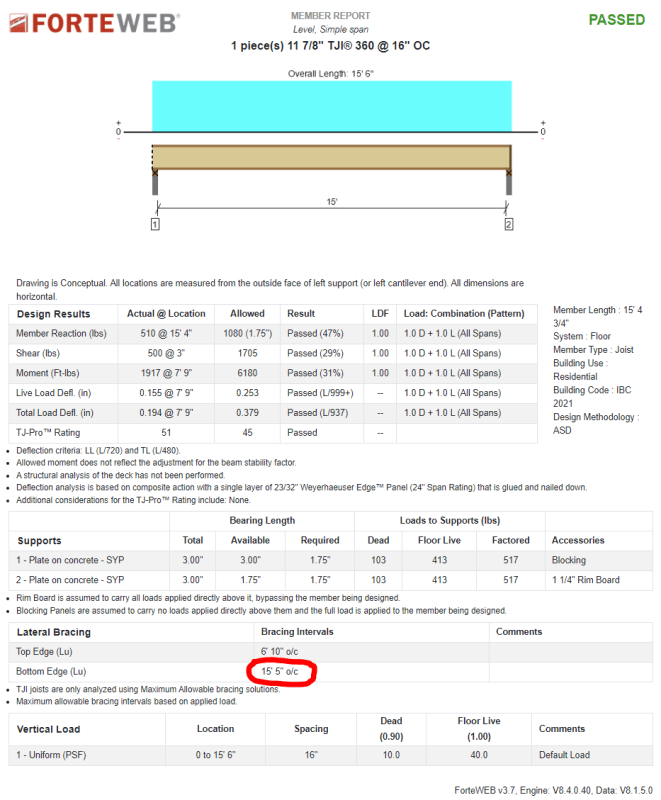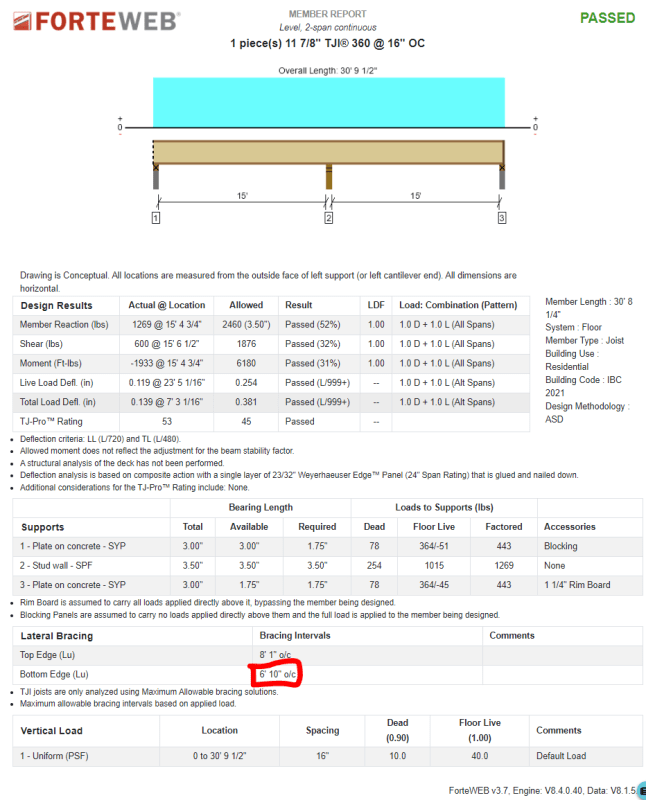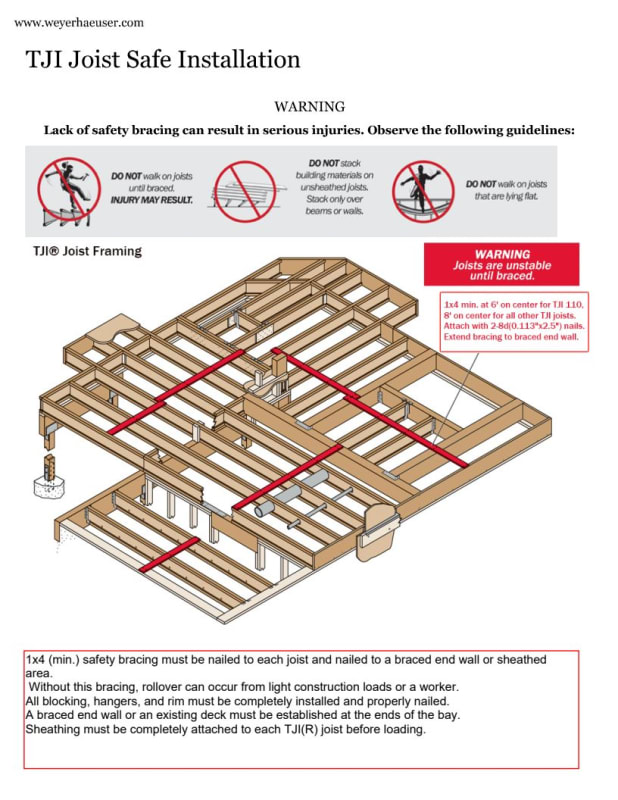ForteWeb TJI Software by Weyerhauser
For decades, I understood that TJI's, in general, do not require Bottom Edge Lateral Bracing throughout the span(s), even at mid-span.
The Weyerhauser website states... Trus Joist® TJI® joists are made with no observable twist and have minimal material variation between joists within any joist series/depth. Consequently, they do not see any significant benefit from bridging. Our code report (ICC ESR-1153) specifically states that bridging is not required for floor and roof TJI joist applications. Weyerhaeuser has found that the addition of bridging does little to improve floor performance and may create squeaks. It is the policy of Weyerhaeuser to recommend against installation of bridging unless an unusual condition exists that would be improved by this addition.
I understand web stiffeners & blocking at bearing locations, intermediate bearings and cantilevers, etc.
HOWEVER... The ForteWeb Software "Report" says, Bottom Edge Lateral Bracing Intervals of 4'-8" over a 16'-0" span!
I DID contact Weyerhauser ForteWeb Support, but, that takes time... "Submit a question" (online)... "Our support team will call you back" (phone)...
AND... I also like to (additional) get Eng-Tip opinion(s).
SO... Despite "generic" program reccommendations / specifications, what do YOU do?
Do you bridge, brace or block at mid-span anyway? (increse cost?)
Comments? Reccommendations? Thank you!
For decades, I understood that TJI's, in general, do not require Bottom Edge Lateral Bracing throughout the span(s), even at mid-span.
The Weyerhauser website states... Trus Joist® TJI® joists are made with no observable twist and have minimal material variation between joists within any joist series/depth. Consequently, they do not see any significant benefit from bridging. Our code report (ICC ESR-1153) specifically states that bridging is not required for floor and roof TJI joist applications. Weyerhaeuser has found that the addition of bridging does little to improve floor performance and may create squeaks. It is the policy of Weyerhaeuser to recommend against installation of bridging unless an unusual condition exists that would be improved by this addition.
I understand web stiffeners & blocking at bearing locations, intermediate bearings and cantilevers, etc.
HOWEVER... The ForteWeb Software "Report" says, Bottom Edge Lateral Bracing Intervals of 4'-8" over a 16'-0" span!
I DID contact Weyerhauser ForteWeb Support, but, that takes time... "Submit a question" (online)... "Our support team will call you back" (phone)...
AND... I also like to (additional) get Eng-Tip opinion(s).
SO... Despite "generic" program reccommendations / specifications, what do YOU do?
Do you bridge, brace or block at mid-span anyway? (increse cost?)
Comments? Reccommendations? Thank you!



